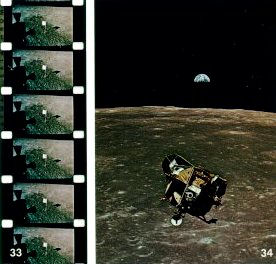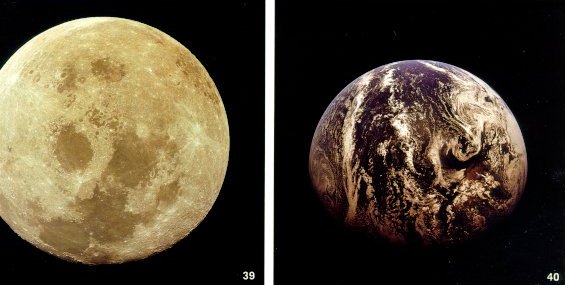 |
 |
|
COLLINS This is Eagle (Photo 34), or perhaps half an Eagle would be better since the landing gear and lower part of the descent, stage, of course, remained on the surface. This was a very happy part of the flight for me. I, for the first time, really felt that we were going to carry this thing off at this stage of the game, and it looks like, although we were far from home, we were a lot closer to it than the pure distance might indicate. Neil made the initial maneuvers to get turned around, and then again I did the final docking. The probe is the dark bundle on the top of the LM and the docking target is below it and to the left in the lighter portion of the LM. As Buzz said, the rendezvous was absolutely beautiful. They came up from below -- as if they were riding on a rail. There was absolutely no disturbance or any off-nominal events during the last part of the rendezvous. Upper right you can see the RCS QUADS, and down below the various antenna and other protuberances. This gives you some idea of the rough surface available on the Moon. (Photo 35.) Of course, the maria on the front side are smoother than this, but in general the back side of the Moon is quite rough. I have a series of slides which, in the interest of time, I'm not going to dwell on, but I just like to point out that we did take a number of pictures, I believe, from Columbia. We took probably a thousand stills and some of them show very interesting surface features, various types of unusual craters, and some of them pose many riddles which we hope the geologists will, in time, be able to answer for us. That line of craters (Photo 36), for example, is difficult to explain; or at least without an argument it is. Here is a nearer crater with the white material having come from it. (Photo 37.) And this is a picture of the solar corona. (Photo 38.) Neil, would you like to close with that? |
|
 |
 |
 |
 |
 |